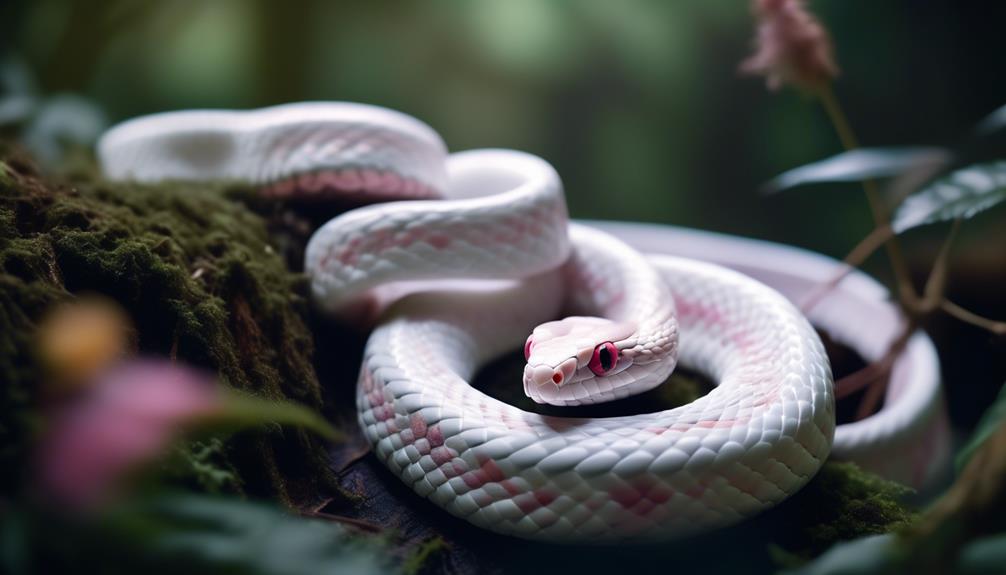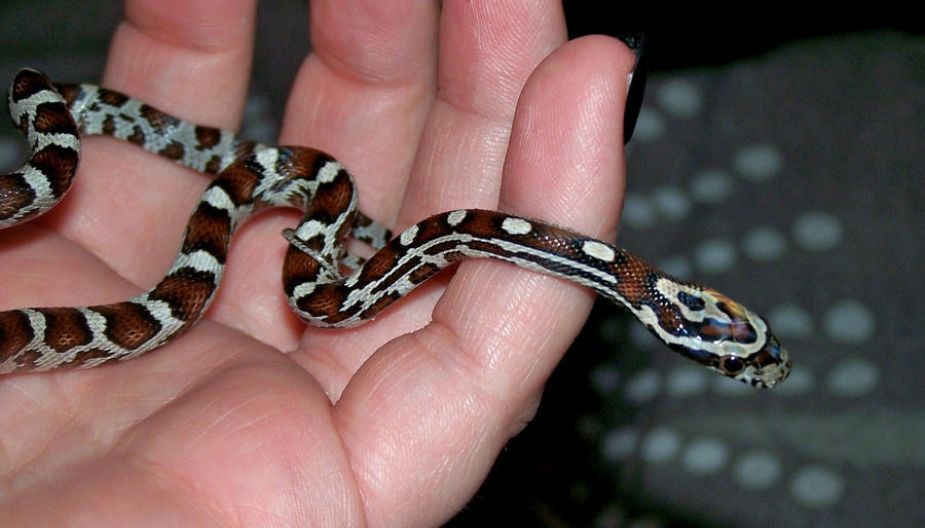Think you know everything about corn snakes? Think again. These fascinating creatures have some surprising traits that may just change the way you view them.
From their unique feeding habits to their secretive nature, there's more to corn snakes than meets the eye.
Stay tuned to uncover these intriguing facts and gain a new appreciation for these captivating reptiles.
Unique Feeding Habits
If you've ever wondered why corn snakes are such successful hunters, it's because of their unique feeding habits that allow them to efficiently catch and consume their prey. These snakes are skilled hunters, using a combination of hunting techniques to capture their prey.
They're constrictors, meaning they squeeze their prey until it suffocates. This method is effective for catching small mammals, birds, and other reptiles. Additionally, their dietary preferences are diverse, as they consume a variety of prey including rodents, lizards, frogs, and bird eggs.
Corn snakes employ a hunting technique known as ambush predation, where they patiently wait for their prey to come within striking distance before launching a swift attack. This method requires patience and precision, traits that contribute to the snake's hunting success.
Their ability to adapt their hunting techniques based on the type of prey available in their environment demonstrates their resourcefulness and efficiency as hunters.
Furthermore, these snakes are adept at climbing, allowing them to access a wider range of potential prey. Their agility and flexibility enable them to hunt in various environments, making them highly adaptable predators.
These unique feeding habits contribute to their success as hunters, ensuring their survival in diverse ecosystems.
Impressive Lifespan
With their unique feeding habits contributing to their hunting success, corn snakes also boast an impressive lifespan that may surprise many reptile enthusiasts. Lifespan factors such as diet, habitat, and genetic variability play crucial roles in determining the longevity of these fascinating creatures.
- Diet: Corn snakes are known for their diverse diet, which includes rodents, birds, and sometimes even small amphibians. This varied diet provides them with essential nutrients, contributing to their overall health and well-being.
- Habitat: The environment in which a corn snake lives greatly impacts its lifespan. A well-maintained habitat with proper temperature, humidity, and hiding spots ensures that the snake remains stress-free and healthy, ultimately leading to a longer life.
- Genetic Variability: Corn snakes exhibit genetic variability, resulting in differences in size, coloration, and overall health. This genetic diversity contributes to the resilience of the species, allowing them to adapt to various environmental conditions and potentially live longer, healthier lives.
Understanding these lifespan factors and genetic variability is crucial for providing optimal care for corn snakes, ensuring that they thrive and live to their full potential in captivity.
Varied Coloration
Featuring a diverse array of vibrant hues and patterns, the varied coloration of corn snakes is a captivating aspect of their visual appeal. These snakes are known for their stunning colors, which can range from vibrant reds and oranges to subtle browns and greys. This wide spectrum of colors not only makes them visually appealing but also serves a purpose in their survival. Corn snakes' coloration allows them to blend into various environments, providing them with a natural form of camouflage and protection from predators.
Their environmental adaptability is further demonstrated through their ability to thrive in a variety of habitats, from forests to grasslands.
When it comes to breeding patterns, corn snakes exhibit a fascinating array of genetic traits that can result in a wide range of color variations within the species. Breeders have taken advantage of this genetic diversity to produce an even broader spectrum of colors through selective breeding. This has led to the creation of numerous morphs, each with its own unique and breathtaking coloration.
Whether in the wild or as part of a carefully bred collection, the varied coloration of corn snakes continues to captivate and intrigue enthusiasts around the world.
Secretive Nature
Corn snakes are known for their secretive nature, often preferring to hide and remain unnoticed in their habitats. Understanding their secretive nature can help you better care for these fascinating reptiles. Here are a few insights into their behavior:
- Breeding habits: Corn snakes are solitary creatures, and during breeding season, they may become even more reclusive. Males may actively seek out females, but otherwise, they tend to keep to themselves, especially when preparing to shed their skin or during periods of digestion.
- Environmental preferences: These snakes prefer secluded spots to rest and hide. In captivity, providing them with plenty of hiding places, such as hollow logs or rock crevices, can help them feel secure. In the wild, they seek out areas with dense vegetation or underground burrows to stay out of sight.
Understanding and respecting the secretive nature of corn snakes is crucial in providing them with a suitable environment. By creating a secure and secluded habitat, you can help them thrive and feel safe in their surroundings.
Surprising Predatory Behavior
When observing corn snakes in their natural habitat, you may be surprised by their adept hunting skills and strategic predatory behavior. These fascinating creatures employ ambush hunting techniques, utilizing their remarkable camouflage to blend seamlessly into their surroundings. This allows them to patiently wait for unsuspecting prey to come within striking distance. Corn snakes are masters of disguise, using their earthy colors to remain hidden until the perfect moment to strike.
| Ambush Hunting | Camouflage |
|---|---|
| Patiently waiting | Blending seamlessly |
| Striking distance | Masters of disguise |
Once the corn snake has successfully ensnared its prey, it employs constriction as its primary method for subduing and ultimately consuming its meal. This feeding behavior involves the snake coiling around its prey, exerting pressure to suffocate and immobilize the unfortunate victim. Corn snakes are known for their efficient and effective feeding habits, making them highly successful predators in their natural environment.
Conclusion
So, now you know that corn snakes aren't just your average reptile. They've the most unique feeding habits, an impressive lifespan, varied coloration, and a secretive nature that makes them all the more intriguing.
And let's not forget their surprising predatory behavior. These snakes are truly a force to be reckoned with in the animal kingdom, and they definitely deserve more recognition for their fascinating traits.


